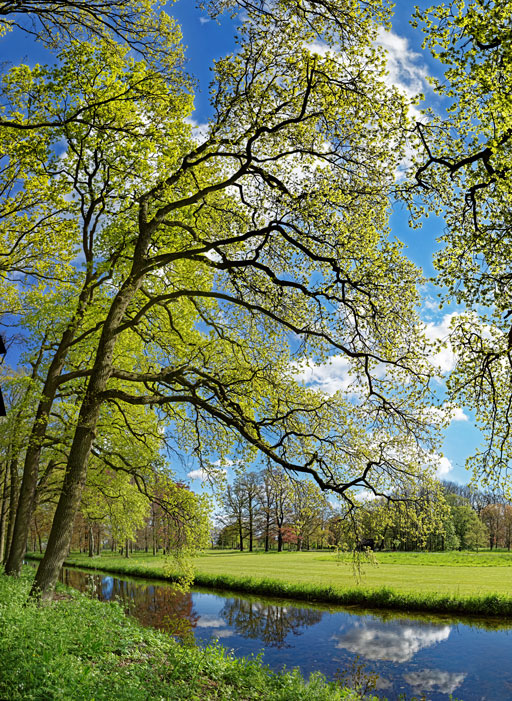
Pixel peepers of the world unite! You have nothing to lose but your mind! Quite literally. All those infected by the bokeh bug ought to know that the verb form of this Japanese term, bokeh suru, means that you are losing it. The bokeh mania will be with us for some time. A year ago I talked with two optical engineers working for Schneider who told me that the mania was only then reaching a peak in China, but they thought that it would pass as an imperious fashion, and manufacturers would return to slower lenses, weighing a third of what they do now.
I keep being astonished by contributors to various Internet forums who, unashamedly, show the world their landscapes and other things taken with full open lenses. Yeah, I know, good unsharpness has its uses for portraits and sundry special effects. But for landscapes? For macro photography? For cityscapes? Even for portraits, would it not be great sometimes to see the person portrayed in his or her clearly delineated environment?
I have earlier written that what has spurred on the bokeh mania is an underdeveloped sense of good composition with many beginning photographers. When everything is sharp, composition is the main thing — besides the play of light and dark — that makes a good photograph. With bokeh all over their frames, a whole generation can hide the fact that they are not good at it.
I am not influential enough on my own to start an anti-bokeh-mania counter-revolution, but in the meantime I have been practicing photography with details, details, and more details. Sharpness used to be the ideal to strive for throughout the history of photography until the digital era — yes, I know there were always afficionados of romance in the mist. Sharpness is an ideal worth preserving.
Once upon a time, in the analogue era, this was best accomplished with 4×5 inch, or even better 8×10 inch, sheet film in a view camera. Since you had to spend roughly the same amount of time holed up in darkrooms for working with either one of those formats, you might as well go for the larger one.

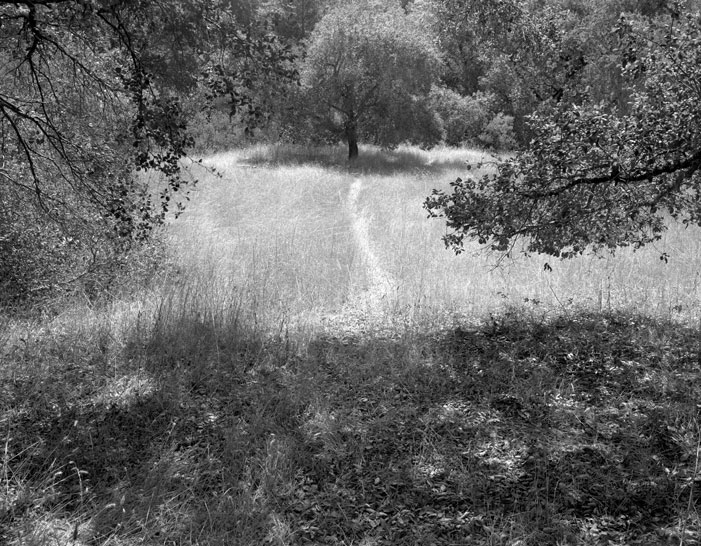
It is with warm feelings that I think of my 8×10 Deardorff adorned with huge Schneider and Nikkor lenses, caressing that uncalibrated mahogany camera with its leather bellows into the desired settings by touch while under a black cloth; seeing the upside down image turning into a piece of the world that you could control.
I often thought it must have been the next best thing to playing a violin. But feelings of affection are mixed with the memory of considerable frustration. The weight of a good tripod! Heavy stacks of 8×10 film holders, cooled by refrigerated elements on trips through Death Valley. Sitting in darkened motel bathrooms for half an hour with towels on both sides of the door to check for light leaks, before sliding the film into its holder all the time worried about particles of dust and drops of sweat! What a liberation, in some ways, that the digital era has brought!
But not right away. The thought of “8×10 by Other Means” shot through my head when I discovered the software originally developed for panorama photography. By adding rows of panoramas on top of each other, you could even go far beyond the resolution of 8×10 negatives.

While stitching is already a well-known method of multiple exposure photography, it is still not well-known enough for many photographers to have been initiated into the artistic joys of 8×10 by Other Means. So, herewith a plea to join us stitchers.
What are the gains?
- Very high definition up to a point that you may see the butterflies on the leaves of the forest trees within your frame.
- Large size prints without a hint of pixels, noise or grain.
- Very large sized prints if you wish.
- A possible very wide field of vision, beyond anything achieved with wide-angle lenses and without their inherent distortion.
- Your own amazement as you see a stitched result about the details in what was out there.
- The knowledge that whatever the subject matter, even the most photographed ones, no one has ever before seen what is in your image because your portrayal of it is likely to be the first of its kind.
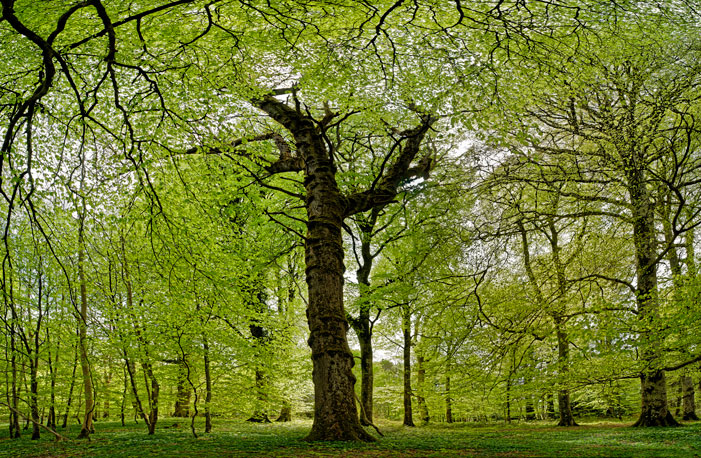
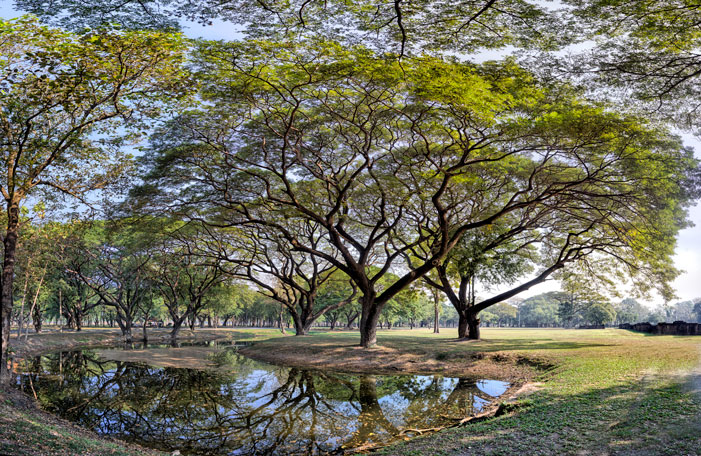
In the most extreme case you can render an image that takes in everything you can see when standing before a wood (or whatever); also the leaves from branches above your head that belong to the trees behind you. The Ocean of Leaves image can give you an idea. That took quite a bit of perspective correction to get right, but the other example of Sukhotai Trees came out of the stitch program almost fully finished.
Which program? There are quite a few packages, some free. I began my stitch career with the Dutch PTGui, which according to my best stitch photography friend still has its uses for certain stitch problems. But after discovering the Autopano people located in the French Alps I have never looked back. The best photographic software is the kind that allows you to concentrate almost entirely on the image, rather than that it demands calculations and confronts you with technical fuss. Autopano Giga is what I recommend without the least hesitation.
What you need in the way of hardware is very little besides the obvious camera with, if at all possible, a sharp lens: a tripod and a panohead. Lastmentioned item allows you to take the horizontal and vertical sequences of exposures that you will be stitching together into a seamless whole. The panohead’s main characteristic is that it allows the camera to turn around the nodal point of its lens, with an easily learned technique you find explained on a hundred or more internet pages. And dedicated panorama software will make life much easier.
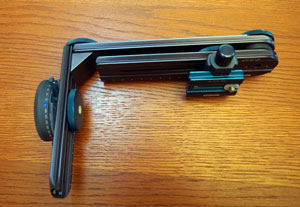
Panoheads come in degrees of sophistication and may be big or small, and can be self-made. There are motorized ones, like the affordable Gigapan series, of which I have used all three sizes, but I have come to like the manual ones that give you the immediate control to stop and start again before and after the gust of wind or unwanted pedestrians that alter the scene whose mosaic of bits you are recording.
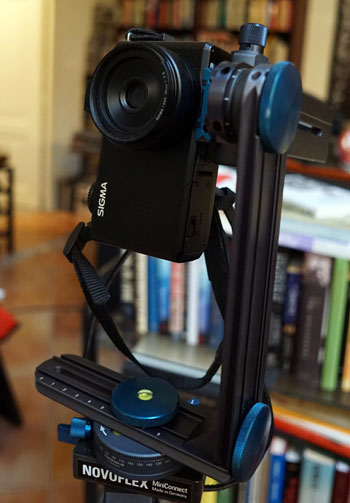
You should consider weight. The old adage about tripods being a necessary evil, the better the tripod, the greater the evil, does not apply to panoheads anymore. While I used to burden my outings in tropical heat with the heavy Gigapan Epic Pro, such days are gone. At the end of last year a dream came true when Novoflex, those German masters of precision manufacturing of photographic utensils, introduced a panohead designed for the new age of mirrorless cameras. Exquisitely made, with the usual Novoflex tolerances, elegant, light and collapsible, you can carry the QPL VR Slim right under the cover of your Think Tank bag and you will hardly know the difference in weight on your shoulder.
I immediately put it to use for recording the battle between new and old buildings within a radius of one kilometer around my apartment in Tokyo. These were mostly made with the Sigma DP2 Merrill. The Foveon sensor of those small Sigma cameras is eminently suited to stitch photography, because of the micro contrast and the near 3D illusion that it can produce. The well-known weaknessses of this camera, like its high quality limited to low ISOs and slow reading times, do not matter that much on the tripod. I have also used my Sony α7R with 35/2 Loxia for these series, which would be my second choice, or my first if I also want to bracket exposures for hdr purposes.
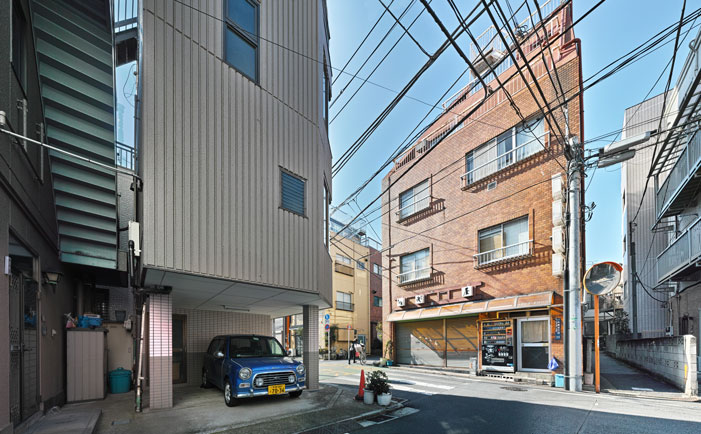
In a development of software genius, the possibly of which I can still hardly believe, you can leave tripod and panohead at home, as all you need instead is a well-trained and well-controlled wrist. That was true earlier for simple landscapes without a close-by foreground, something that causes parallax problems. But now we can make ‘handstitches’ of almost anything, including scenes bustling with life and people moving their heads to and fro. Thanks to the later versions of Autopano Giga with their truly magic anti-ghost algorithm. Check the stitches of market and Chinatown scenes I made in Bangkok. I used a Sony α6000 for these with the sharp Sigma 19mm at a small lens opening for maximum depth of field.
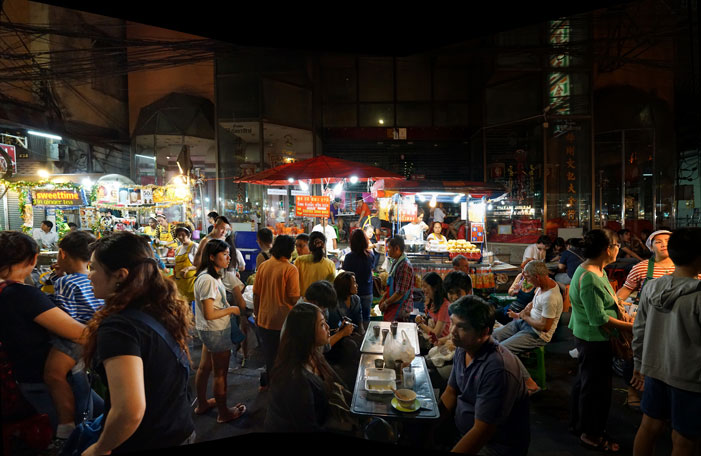
To make that work I had to make many more overlapping exposures than would have been the case for a conventional stitch. These allowed me to choose the position of various heads that I wanted in the final image, and could give me sharpness from less than a meter distance to infinity. Getting the silver rims right of the huge dishes with seafood of “In a Bangkok Market 1” was a tour-de-force that took me hours of going back again and again to anti-ghost modifications. The lady behind the stall was moving from the extreme left to the extreme right, and the gentleman preparing the prawns could not keep his head still. But nothing of that remains noticeable as I had enough exposures to choose from. If you can read Thai, you will be able to read the newspapers under the dishes without any strain.
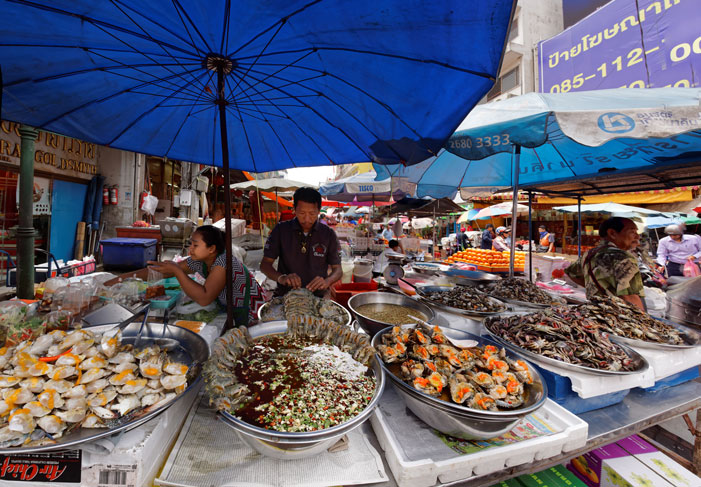
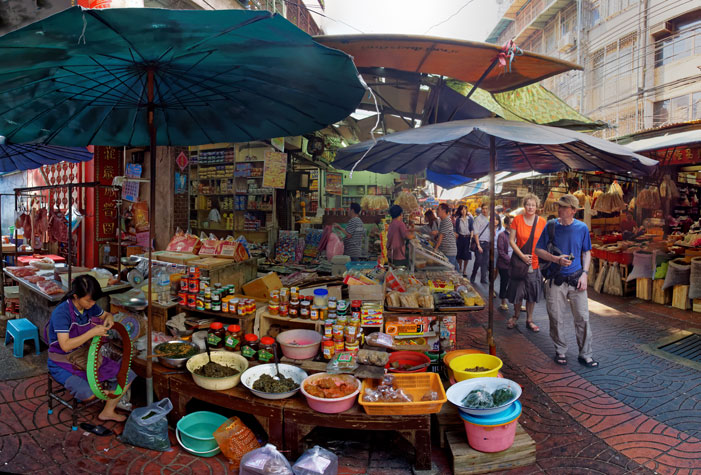
Simpler handstitches with a great field of vision and sharpness from close up to infinity can of course also be had if we put a 21mm on a full frame camera. The Garden of Villandry with everything in focus comes from a mere three exposures with the 21mm Zeiss Distagon on my α7RII.
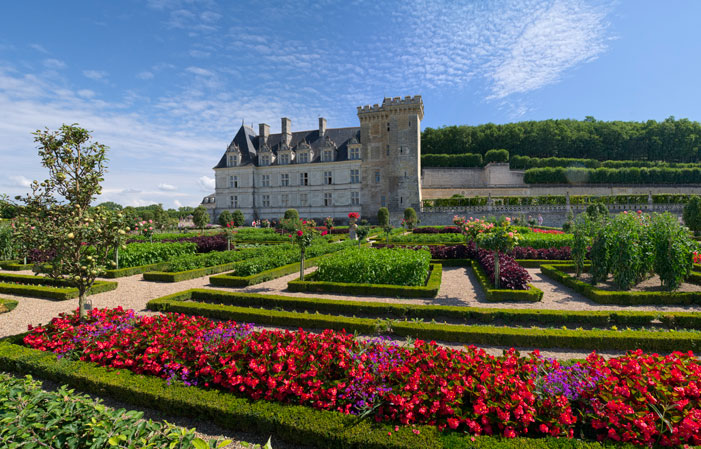
I wonder what the new Sigma Foveon DP0 Quattro with its spectacular 21mm equivalent lens can deliver using this three vertical frame exposure technique, and hope to find out when I can lay my hands on one.
Stitches can of course be made from exposure series made with any focal length, but wide angle lenses would seem to offer the best chance for success for hand stitches. Most recently I have found that the combination of the 25mm Batis with the α7RII is ideal, delivering marvelous detail only matched by the 55mm. Heather Dead and Alive was done with the Batis in less than a couple of minutes. This brings stitching back to the realm of impulse photography, with results you can print 4 meters wide or even more if you wish; and interior architects ought to wish such a thing.
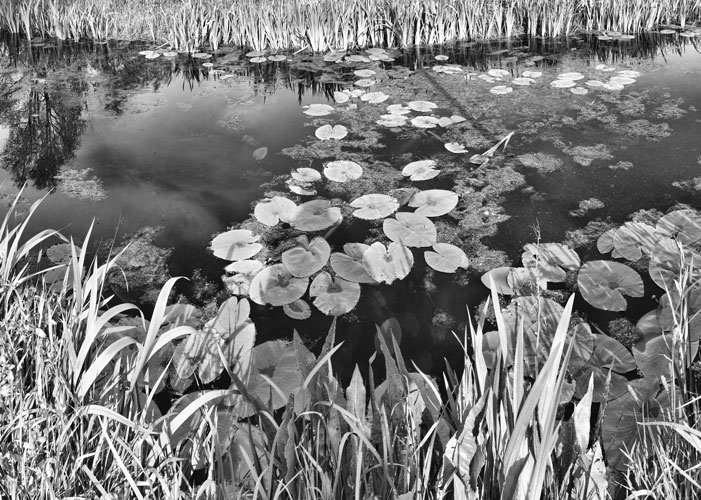
Digital sensors have opened up a rich world of possibilities for multiple exposure photography. HDR is the best known, and you can combine it with stitching. The Late Sun in a Dutch Landscape would otherwise not have been possible. And with Irish Spring I would never have achieved the tonalities in green with single frames. Exaggerated HDR sometimes has its uses, but I shy away from it and after much experimenting with I think every package in this area, I want to point you to the Polish Sebastian Nibisz whose SNS-HDR renders the most natural looking images.
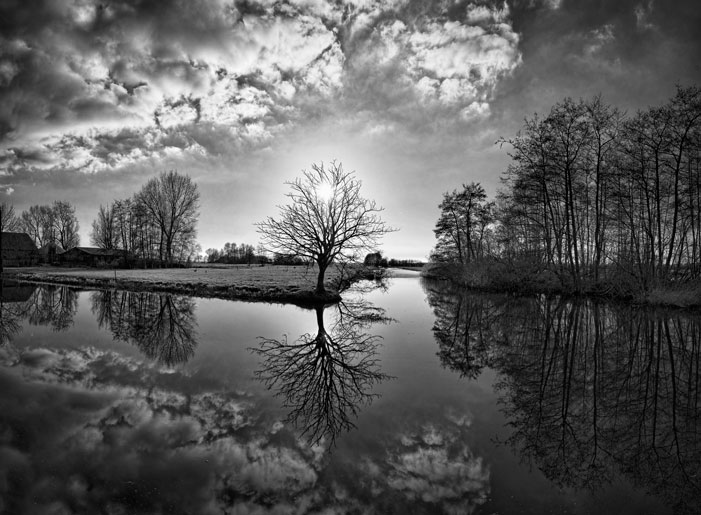
Stitching and HDR; what could we add to this? Well… think of our limitations throughout the history of photography, shortcomings of representation, that were never a problem for painters. Painters did not have to be concerned about the huge gap between the brightest highlights and deepest shadows in the way we do.
Field of vision? Painters just had to make sure that their compositions held up. And whatever was right under their noses could be painted equally as sharp as the mountains in the far distance. With large format viewcamera photography you could get around that focus problem through the so-called Scheimpflug principle: tilting the lens plane — the front — forward in relation to the film plane and thereby adjusting the plane of focus. See my Death Valley Race Track and Bird Trail in New Mexico from 8×10 negatives.
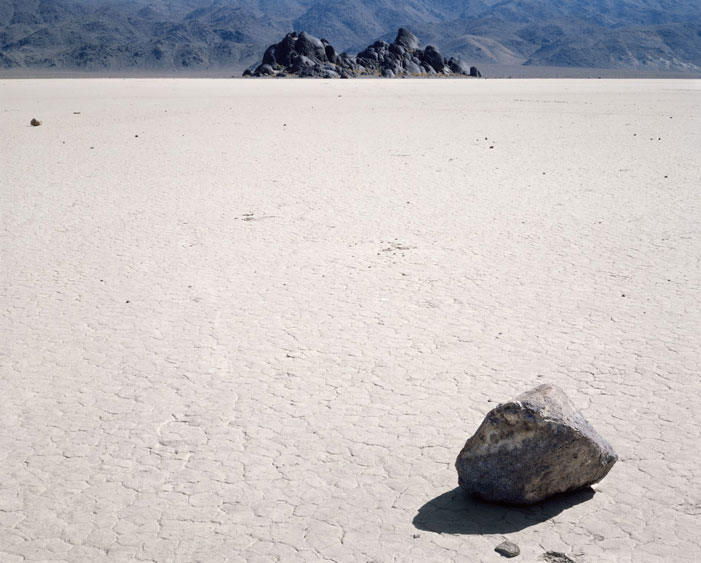
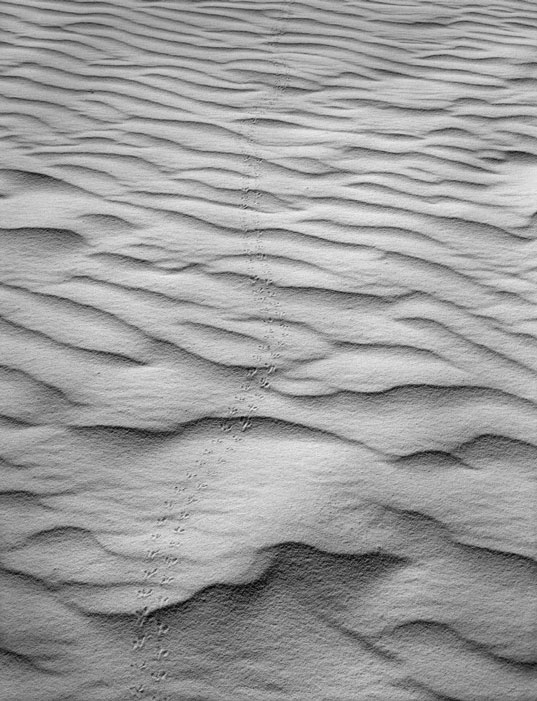
With digital photography we can go one better than that and stack multiple exposures focussed for close and far. It makes compositions possible, like the one of Palm leaves against a bunch of rubber trees in southern China, that you could never get with a single exposure.

The best focus-stacking software in my experience is Helicon Focus. This program, originally developed to get antennae and bugs eyes all sharp in macro photography, is easy, fast, very accurate and with tricks to get around disturbing artifacts.
Combine stitching and stacking and naturalistic HDR, and what do we get? Exclamations from all around — I report this on the basis of repeated experience – “It looks just like a painting!” I know, you want to be a photographer and not a painter, but still…
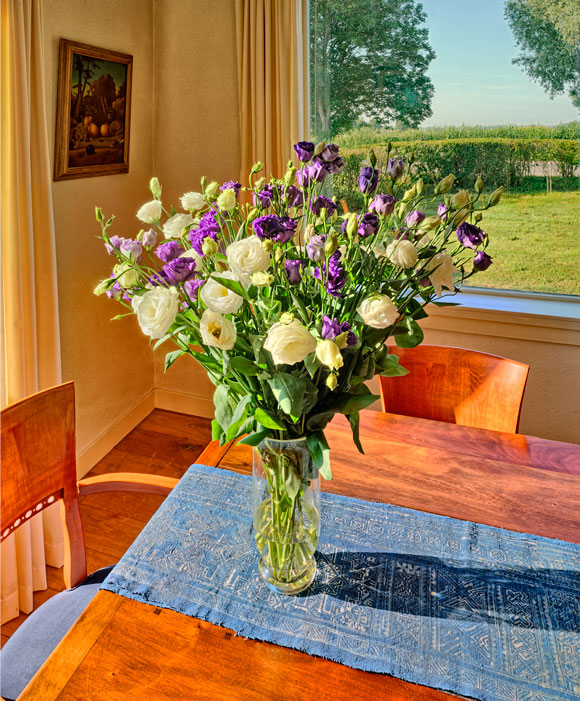
With the flower still life in my front room the nearest flower was perhaps ten centimeters from the lens, and the tree outside the window is sharp too. With the view from my kitchen window you could do a botanical study of the thistles, count the rain drops on the window pane and examine the trees outside. You do not want to be a painter, but only painters in the 15th century forced by their guilds to deliver their best could manage that kind of detail.
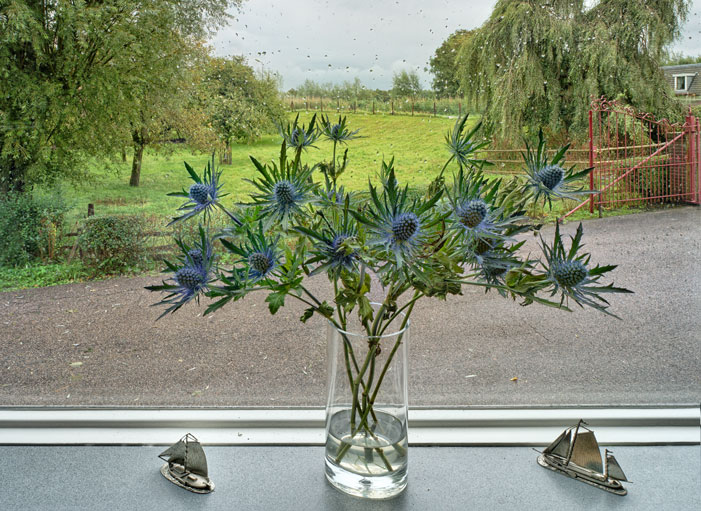
The images in this post were drastically reduced to prevent this website from groaning under their weight. This means that you can only guess what their quality is like in their printed form. It is a drawback of what I am doing in my counter-revolution. Everyone knows what paintings look like and can guess the nature of the real thing when seeing reproductions. That is not the case with the images here. I have to show their prints to people in person; and they are rather big and, although on aluminum, rather heavy.
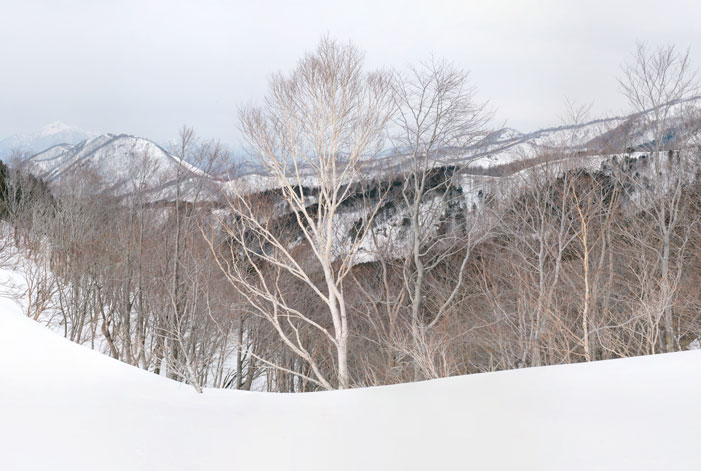
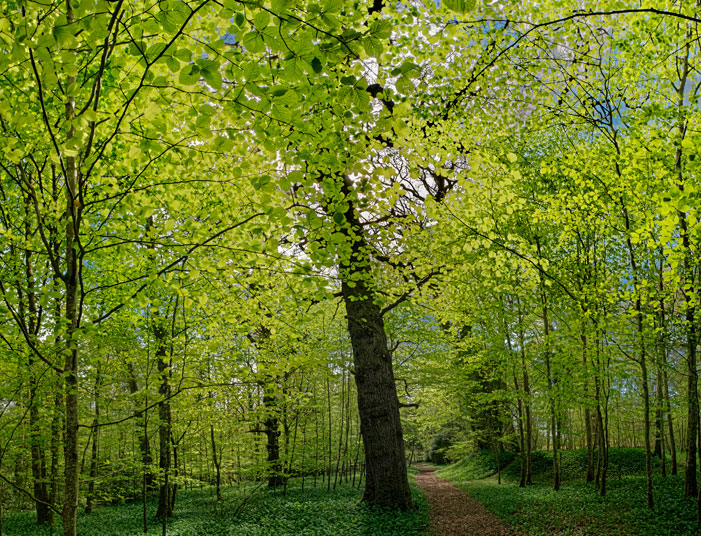
The subtleties of Ura Bandai in Winter are simply beyond the capturing power of a single image in any format. As are the shades of green in Irish Spring. A friend who has developed a 3-layer coating that protects my cotton rag inkjets against threats from the environment makes the ubiquitous detracting glass cover before the photographs unnecessary.
And as several exhibitions in Japan have begun to prove, some people in some parts of the world are awakening to the possibility of this kind of photography in large sizes on their walls as a substitute for paintings.
